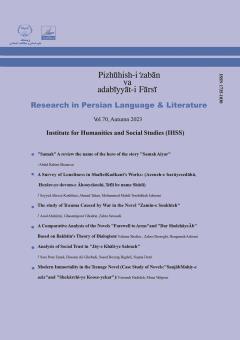Jacques Lacan is undoubtedly one of the most influential figures in the science of psychology after Sigmund Freud, whose ideas have been influential not only in the field of psychology, but also in other fields such as literature, anthropology, social sciences and women
More
Jacques Lacan is undoubtedly one of the most influential figures in the science of psychology after Sigmund Freud, whose ideas have been influential not only in the field of psychology, but also in other fields such as literature, anthropology, social sciences and women's studies. The most important idea of this contemporary psychologist is to describe the process of individuality under the threefold system of imaginary and symbolic and the realm of reality. Reza Zangiabadi's novel "Shekar-e Kabk (Hunting in Quebec)" is one of the remarkable works of recent years, which, in addition to its success among the audience, has been selected as a novel by the jury of the 12th Golshiri Foundation Literary Award. This novel tells the story of an innocent teenager who turns into a ruthless murderer due to the hardships and events of life. The present article, written in a descriptive-analytical manner, seeks to examine the process of transforming Ghodrat from an innocent adolescent into a psychotic and isolated person, using Jacques Lacan's ideas. The results show that the transition of this character from the imaginary to the symbolic realm, which is accompanied by the absence of the mother, due to the negative and dysfunctional role of the father -which according to Lacan is the subject's psychological node in the symbolic realm- causes his permanent suspension and suspicion of social order. As a result, she has taken refuge in maternal objects. This is in conflict with the nature of the symbolic realm and results in mental disorders such as paranoia, fear, isolation and suspicion in the subject.
Manuscript profile


